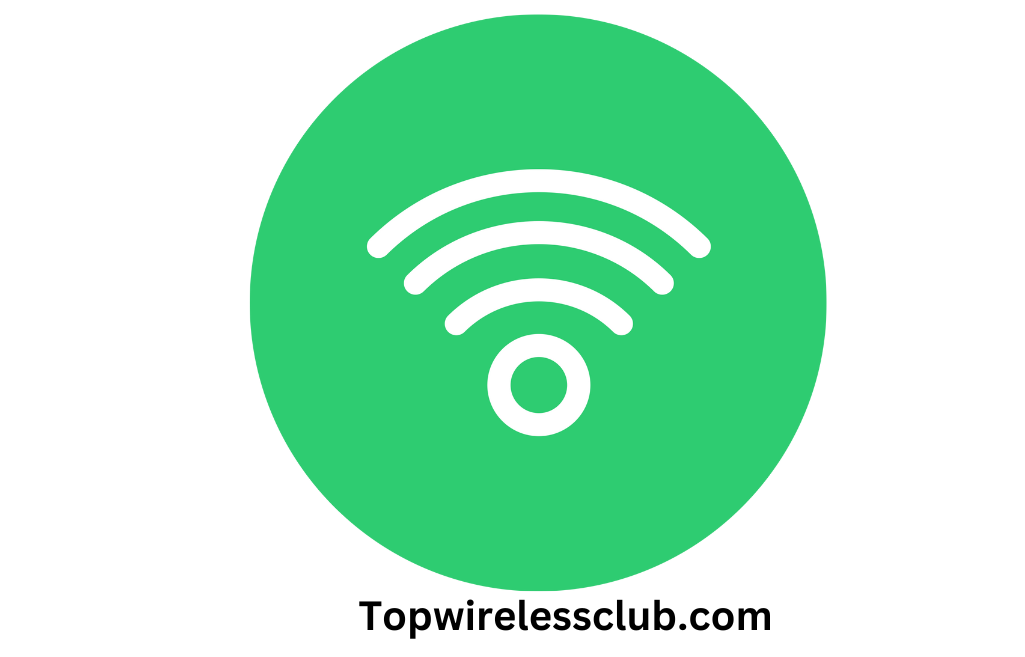What is Wireless Number: The Ultimate Guide to Wireless Phone Numbers
A wireless number is a telephone number that is not tied to a physical landline connection. The advent of wireless technology has revolutionized communication, offering the flexibility and convenience of making calls from anywhere, without being limited by the constraints of a physical landline connection.
Wireless numbers, also known as mobile or cellular numbers, are assigned to individual mobile devices such as smartphones and tablets. These numbers are linked to a wireless network, enabling users to make and receive calls, send text messages, and access the internet while on the go.
With the growing reliance on mobile devices, wireless numbers have become an essential part of modern communication, allowing individuals and businesses to stay connected and access information regardless of their location.
What Are Wireless Phone Numbers: A Comprehensive Overview
Wireless phone numbers have become an indispensable part of our everyday lives. With the advancement of technology, the way in which we communicate with one another has undergone a substantial transformation. In this comprehensive overview, we will delve into the definition of wireless phone numbers, as well as explore their evolution over time.
Definition Of Wireless Phone Numbers
A wireless phone number is a unique numerical identifier assigned to a mobile device that allows for communication with other telephone lines, both wired and wireless. Serving as a point of contact, wireless phone numbers enable individuals to make and receive calls, send and receive text messages, and access various internet services through their mobile devices.
Notably, wireless phone numbers are distinct from landline phone numbers, which are associated with traditional telephone systems that rely on physical copper wires.
Evolution Of Wireless Phone Numbers
The evolution of wireless phone numbers can be traced back to the early days of telecommunication. Initially, mobile devices were limited to operating within a certain range of a base station, commonly known as a cell tower. Each cell tower served a specific geographic area and assigned unique phone numbers to the connected mobile devices within that area.
However, as technology advanced and mobile networks expanded, the concept of roaming was introduced. Roaming allowed mobile devices to connect to different cell towers, even when traveling outside their home network. This introduced the concept of mobile subscribers having permanent phone numbers regardless of their location.
In recent years, the development of Voice over Internet Protocol (VoIP) and the integration of wireless networks with Internet services have further transformed the landscape of wireless phone numbers. With VoIP technology, phone calls and messages can be transmitted over the Internet, eliminating the need for traditional telephone lines.
The integration of wireless networks with internet services has also given rise to features such as video calling, mobile applications, and other data-intensive services that rely on wireless phone numbers for connectivity. This integration has not only revolutionized the way we communicate but has also opened up a vast range of possibilities for businesses and individuals alike.

Credit: www.amazon.com
How Wireless Phone Numbers Work: The Basics
When it comes to understanding how wireless phone numbers work, it’s helpful to first grasp the basics. Wireless numbers are the unique identification numbers assigned to mobile devices, allowing users to make calls, send texts, and access mobile services. In this article, we will delve into the structure and format of wireless phone numbers, as well as the essential role played by area codes and prefixes.
Structure And Format Of Wireless Phone Numbers:
A wireless phone number consists of several distinct components that help identify and route calls to a specific device. To better understand the structure and format, let’s break down a typical wireless number:
- Country Code: The country code is a numeric prefix indicating the country or region a phone number belongs to. For instance, the country code for the United States is +1.
- Area Code: The area code is a three-digit code that identifies a specific geographic area within a country or region. It helps narrow down the location of the phone number. For example, in the United States, the area code 212 is associated with New York City.
- Prefix: The prefix, also known as the exchange code, follows the area code and identifies the central office or exchange serving a specific locality. It helps route calls within a specific area code.
- Line number: The line number is the remaining digits of the phone number that uniquely identify an individual device connected to the exchange.
The structure and format of wireless phone numbers may vary slightly between countries or regions, but the general pattern remains consistent.
Role Of Area Codes And Prefixes:
The area code and prefix of a wireless phone number play crucial roles in call routing and identification. Let’s explore these roles further:
Area Code: Area codes are used to designate a specific geographic area within a country or region. They help organize phone numbers based on location, enabling callers to quickly identify the general area where the recipient is located. Additionally, area codes assist in routing calls between different regions, ensuring efficient connectivity across vast distances.
Prefix (Exchange Code): Following the area code, the prefix or exchange code provides a more localized identification. It represents the central office or exchange serving a specific area, enabling calls to be routed accurately within a particular locality. The prefix helps differentiate different exchanges within the same area code, ensuring precise call routing and efficient network management.
By combining the country code, area code, and prefix, wireless phone numbers become unique and identifiable, enabling seamless communication between users in different locations.
Wireless Number Portability: Transferring Phone Numbers
Wireless Number Portability allows users to transfer their phone numbers between different service providers effortlessly, ensuring convenience and seamless communication. Say goodbye to the hassle of changing numbers and enjoy the freedom to switch providers while keeping your existing phone number.
What Is Wireless Number Portability?
Wireless number portability is the process of transferring your phone number from one carrier to another. In simpler terms, it allows you to switch telecom providers without having to change your phone number. This has been a game-changer in the telecommunications industry, providing consumers with more freedom and flexibility.
Process Of Transferring Phone Numbers Between Carriers
The process of transferring phone numbers between carriers involves a few simple steps. Here’s a step-by-step guide:
Step 1: Research and choose a new carrier
Before you can begin the transfer process, you need to research and choose a new carrier that suits your needs. Take into consideration factors such as coverage, plans, pricing, and customer service.
Once you’ve selected a new carrier, get in touch with them to start the number porting process. You’ll need to provide them with some information, including your current carrier, account details, and the phone number you want to transfer.
Your new carrier will then check if your number is eligible for porting. In most cases, as long as you’re in good standing with your current carrier and your number is active, you should be eligible for the transfer.
Depending on your new carrier’s requirements, you may need to provide some documentation to initiate the porting process. This can include a copy of your current phone bill or proof of ownership of the number.
Transfer Place
Once you’ve completed the necessary steps, it’s time to wait for the transfer to take place. This process can take anywhere from a few hours to a few days, depending on the carriers involved. During this time, it’s important to keep your current phone active and refrain from canceling your service.
Once the transfer is complete, you’ll receive confirmation from your new carrier that your number has been successfully ported. At this point, you can insert your new carrier’s SIM card into your phone and begin using your existing phone number with your new service provider.
Wireless number portability has made it easier than ever to switch carriers without the hassle of notifying friends, family, and business contacts about a new phone number. So, if you’re unhappy with your current carrier or have found a better deal elsewhere, don’t hesitate to take advantage of this convenient service and switch to a new provider while keeping your beloved phone number.
Understanding The Importance Of Wireless Phone Numbers
Wireless phone numbers are essential in our increasingly connected world. They provide the freedom to communicate without being tied to a physical location, ensuring accessibility and convenience for both personal and business use. Understanding the importance of wireless numbers allows individuals to stay connected and businesses to reach their target audience effectively.
Significance of wireless phone numbers in telecommunications
Wireless phone numbers play a crucial role in today’s telecommunications landscape. As more people rely on mobile devices as their primary means of communication, understanding the importance of wireless phone numbers becomes essential. In this section, we will explore the significance of wireless phone numbers and how they impact mobile communication and customer convenience.
Wireless phone numbers have a significant impact on mobile communication and customer convenience. Let’s dig deeper into this:
Instant accessibility and reachability
Wireless phone numbers enable instant accessibility and reachability anytime and anywhere. With a wireless phone number, individuals can stay connected on the go, allowing for seamless communication and eliminating the need for physical landlines. This level of accessibility empowers businesses and individuals to keep in touch, stay informed, and make prompt decisions without any limitations (Table 1).
Table 1: Comparison between landline and wireless phone numbers
| Landline | Wireless |
|---|---|
| Location-dependent | Portable and location-independent |
| May require additional installation | No installation needed |
| Relies on physical infrastructure | Relies on wireless networks |
Enhanced mobility
Wireless phone numbers give individuals the freedom to communicate on the move. Gone are the days of being tethered to a specific location to make or receive calls. Thanks to wireless phone numbers, people can remain connected whether they are traveling, commuting, or simply away from their desks. This increased mobility allows for more efficient and productive communication, driving business growth and personal convenience.
Seamless integration with other communication technologies
Wireless phone numbers seamlessly integrate with other communication technologies, such as voicemail, text messaging, and internet-based applications. This integration allows for a wide range of communication options beyond traditional phone calls. Whether it’s leaving a voice message, sending a text, or utilizing mobile apps for video conferencing, wireless phone numbers provide a comprehensive communication experience.
Cost-effective and scalable solutions
Wireless phone numbers offer cost-effective and scalable solutions for businesses and individuals. Traditional landlines often require extensive infrastructural setup and maintenance costs. In contrast, wireless phone numbers can be easily obtained and managed, eliminating the need for expensive equipment or complex installations. Additionally, as business needs to evolve and expand, wireless phone numbers can be scaled up effortlessly (OrderedList 1).
Ordered List 1: Scalability with wireless phone numbers
- Start with a few wireless phone numbers
- Expand as the business grows
- No need for significant infrastructure changes
- Cost-effective and flexible solution
Wireless phone numbers are crucial in the modern telecommunications landscape. They enable instant accessibility, enhance mobility, integrate with other communication technologies, and provide cost-effective scalable solutions. As the reliance on mobile devices continues to grow, understanding the importance of wireless phone numbers becomes paramount. The ability to stay connected on the go empowers businesses and individuals alike, facilitating seamless communication and customer convenience.
Wireless Phone Numbers And Privacy: Security Measures
In today’s digital age, where mobile devices have become an integral part of our lives, the protection of personal information associated with wireless phone numbers has become a top priority. With the increasing prevalence of online scams, phishing attempts, and identity theft, it is crucial to understand the security measures that can be taken to safeguard your privacy when it comes to sharing your phone number.
Protecting Personal Information Associated With Wireless Phone Numbers
When it comes to protecting personal information associated with wireless phone numbers, there are several steps you can take to ensure your privacy remains intact. By implementing these security measures, you can reduce the risk of your sensitive information falling into the wrong hands.
Best Practices For Safeguarding Privacy When Sharing Phone Numbers
When sharing your phone number, whether it be for personal or professional purposes, it is essential to be mindful of privacy concerns. By following best practices, you can minimize the potential risks involved in sharing this sensitive information.
1. Be selective about who you share your phone number with
One of the most effective ways to safeguard your privacy is by being selective about who you share your phone number with. Only provide your number to trusted individuals or reputable organizations that have a legitimate need for it.
2. Use a virtual phone number
A virtual phone number is an excellent option for those who want to maintain their privacy while still having the ability to communicate via phone. These numbers can be obtained through various online services and act as a buffer between your personal phone number and the outside world.
3. Enable two-factor authentication
Two-factor authentication adds an extra layer of security to your phone number by requiring an additional verification step when signing in to certain accounts or services. By enabling this feature, you can ensure that only authorized individuals can access your phone number.
4. Regularly review privacy settings
Take the time to review the privacy settings on your mobile device and any apps that have access to your phone number. Ensure that only necessary permissions are granted and that your information is not being shared with third parties without your consent.
5. Be cautious of unknown callers
If you receive a call from an unknown number, exercise caution before providing any personal information. Scammers often use phone calls as a means to extract sensitive data, so it is best to err on the side of caution and avoid sharing information unless you can verify the identity of the caller.
6. Keep your device and apps up to date
Regularly updating your mobile device’s operating system and apps is crucial for maintaining the security of your wireless phone number. Updates often include security patches that address any vulnerabilities that could be exploited by malicious individuals.
By following these best practices and being proactive about protecting your wireless phone number, you can significantly reduce the risk of falling victim to privacy breaches and ensure that your personal information remains secure.
Frequently Asked Questions For What Is Wireless Number
What Is A Wireless Number And How Does It Work?
A wireless number refers to a phone number that is assigned to a mobile device. It allows users to make and receive calls and access wireless services without being physically connected to a landline.
Why Should I Choose A Wireless Number Over A Landline?
A wireless number offers the flexibility of mobility, allowing you to use your phone on the go. It eliminates the need for physical wires, making it convenient and accessible in various locations.
How To Transfer My Current Landline Number To A Wireless Number?
To transfer your landline number to a wireless number, you can contact your mobile service provider and inquire about their number porting process. They will guide you through the steps required to transfer your number seamlessly.
Conclusion
Wireless technology has become an integral part of our lives, allowing us to connect and communicate seamlessly. It has revolutionized the way we work, play, and stay connected. By understanding what a wireless number is and how it works, we can harness its power and make the most of this modern marvel.
So whether it’s reaching out to loved ones, conducting business, or simply staying informed, the wireless number is a key element in our digital world that keeps us connected on the go. Embrace wireless technology and unlock the possibilities it offers.



